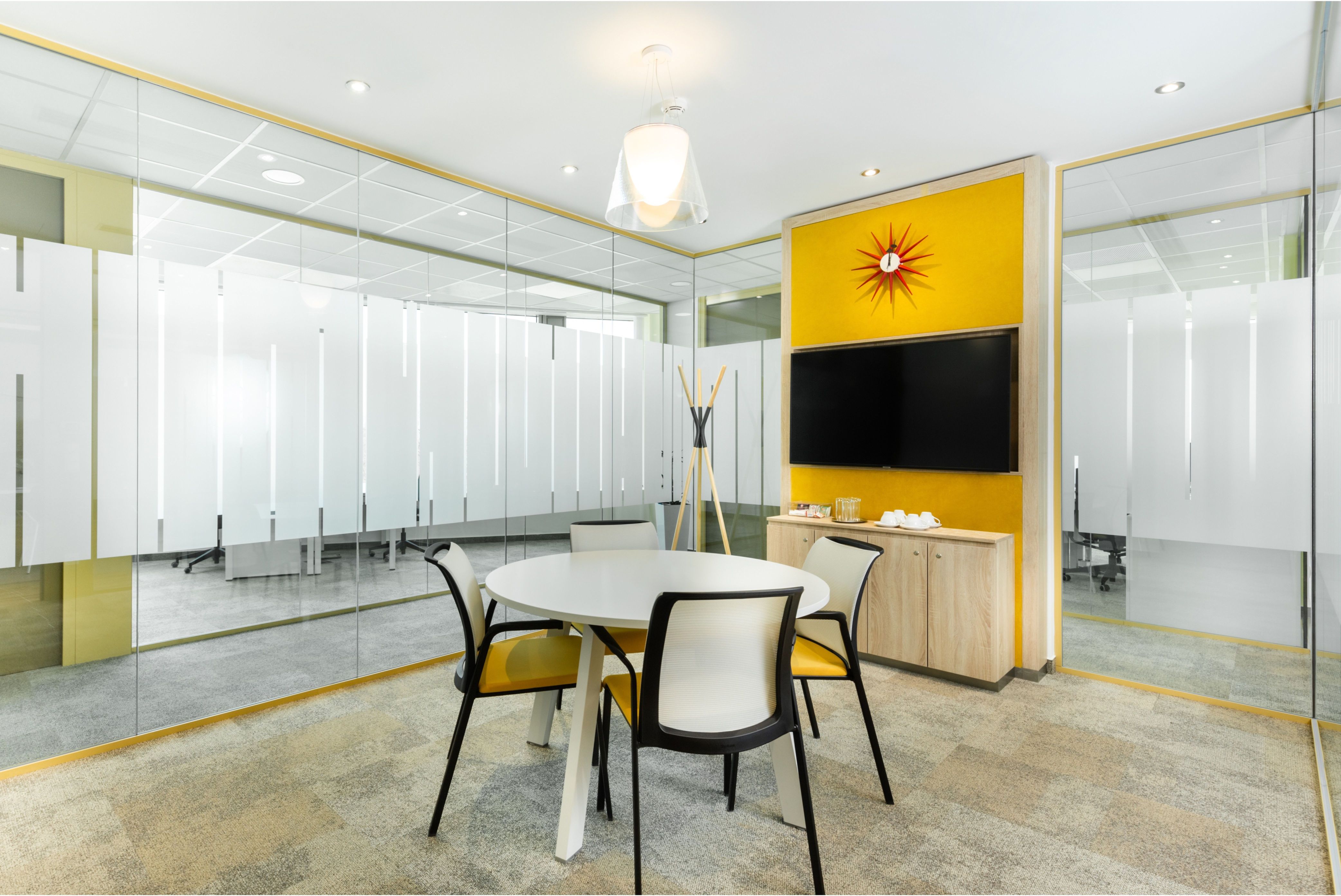Hybrid Work Model Looks Here to Stay, but at What Ratio?
-OK.jpg)
Phase one of H2Offices by Skanska, in the Váci út Office Corridor.
A hybrid work model, whereby employees use a combination of in-office and remote days, is increasingly becoming the norm in modern office complexes, writes real estate editor Gary J. Morrell.
The office has traditionally been central to work activity, but home office has become increasingly common since the pandemic and in the post-Covid environment. Indeed, flexibility/hybrid work stands in the top three priorities when considering a job, according to iO Partners Hungary. Further, 98% of business services centers in the CEE region have adopted remote work practices, consultancy CBRE says.
“While there is a push from big businesses to return to the office, workplace experts believe that most organizations will adopt a mostly flexible approach in the future. The concept of spending five days a week in the office is becoming outdated, as companies recognize the value of remote work and the benefits it brings,” says HRD Connect, a product consent provider for HR organizations.
Even so, a growing number of firms have begun to demand that more workers show up in the office. As a result, the hybrid model that took hold after the pandemic has chiefly settled into a 3:2 ratio: three days in the office and two days from home.
However, some employers are considering a total return to the corporate office. To avoid losing employees, who increasingly prefer home office-enabled work, they will need to address both the attractiveness of their offices and their relationships with their people, research among 300 companies in the EMEA region by Colliers concludes.
“In today’s offices, 30-40% of the space is allocated to individual workstations and 60-70% to team collaboration and relaxation. This is a mirror reversal of the pre-pandemic situation,” says Jana Vlková, director of Workplace Advisory and Office Agency at Colliers.
“Smaller meeting rooms for two to six people are important, which also serve to support virtual meetings. Companies can also easily adapt their spaces with mobile phone booths and meeting modules for up to six people in a previously densely occupied open space,” she says. Data suggests that the investment in transformation will pay off in the form of happy, engaged employees, Vlková argues.
“Office occupancy levels have been slow to pick up after the pandemic, averaging only around 35% according to recent surveys. Perhaps this is why some employers, especially international companies, are taking a more intense approach to in-office presence, in which they have often invested heavily in recent years and thus adapted their office spaces to the latest trends,” she points out.
Turning Point?
“This year will be a turning point in this respect. It will show whether the hybrid model has really taken root in our country to the extent that there is no going back to the traditional setup,” Vlková says.
Aurelia Luca, executive vice president of operations for Hungary and Romania at Skanska, agrees that the situation is changing.
“Based on a comprehensive survey that we conducted across four CEE countries, we are witnessing an evolving hybrid working model,” she says. The Skanska study revealed a preference for office-based work, with over half of respondents predominantly working from the office.
In Hungary, 27% of employees preferred to work only one or two days in the office and the rest from home. But limited days in the corporate HQ can also have a significant negative impact according to employees in all countries. Top of the list is the integration of new employees at 44%. Other areas of concern include social and professional relationships between employees (41%), and teamwork, involvement in after-hours company activities, and recruitment of new employees (all 37%).
Employees prefer to work in a hybrid model and often expect flexibility in working hours and the ability to choose when and where they work. When they do come in, they need an environment that fosters teamwork and collaboration, both physically and virtually, says Csaba Zeley, managing director of developer ConvergenCE.
“Most companies that apply the hybrid model have two to three days in the office: teams can generally choose specific days each week, with the remaining days spent working remotely,” he explains.
“Mondays and Fridays are definitely the least popular days for these teams, but this can vary widely and is often determined by organizational policies and the nature of the work. Many of our tenants come to the office every day, but our offices are in prime locations and therefore may not be representative for the whole capital,” Zeley adds.
The 3:2 Ratio
Máté Galambos, leasing manager for the Belgium-based multinational developer Atenor, says the most common setup is the 3:2 approach in his firm’s experience.
“Most of the leases that we have signed in the past years supported this way of working through the layout of the office, the number of workstations and, therefore, the average size of the office leases started to shrink,” he says.
The hybrid work trend could create tension between employee preference for remote work and employer insistence on an in-office presence. Factors such as collaboration, productivity, work-life balance and employee satisfaction should be setting a guide, in the view of analysts.
“It is certainly extremely hard to attract employees back to the office, especially if they were granted a 100% WFH [work from home] policy earlier. Many employees seek fully remote positions, which is why it is crucial for employers to provide inspiring and homelike office spaces,” comments Galambos.
“We have some tenant feedback claiming that upgrading to a gorgeous new office helped them lure back some of their staff, and many people end up staying for more days than required by management,” he says.
Convergence’s Zeley says company executives worry about effective communication, information flow, and the potential for miscommunication in a remotely working workforce.
“Some employers may worry about maintaining productivity levels, monitoring work, and ensuring accountability when employees work remotely. Many employees appreciate the flexibility of remote work and argue that they can be just as, if not more, productive outside the traditional office. Successful implementation of remote or hybrid work often involves clear communication, establishing policies that address concerns, and creating a supportive work culture that fosters trust and flexibility,” Zeley concludes.
This article was first published in the Budapest Business Journal print issue of January 26, 2024.
SUPPORT THE BUDAPEST BUSINESS JOURNAL
Producing journalism that is worthy of the name is a costly business. For 27 years, the publishers, editors and reporters of the Budapest Business Journal have striven to bring you business news that works, information that you can trust, that is factual, accurate and presented without fear or favor.
Newspaper organizations across the globe have struggled to find a business model that allows them to continue to excel, without compromising their ability to perform. Most recently, some have experimented with the idea of involving their most important stakeholders, their readers.
We would like to offer that same opportunity to our readers. We would like to invite you to help us deliver the quality business journalism you require. Hit our Support the BBJ button and you can choose the how much and how often you send us your contributions.










